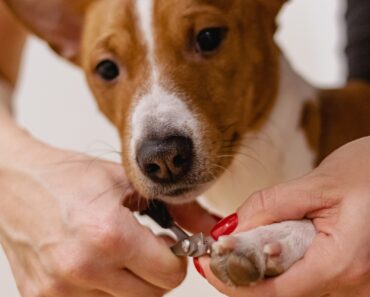When we think of police dogs, breeds like German Shepherds and Belgian Malinois often come to mind. These dogs are known for their intelligence, agility, and strong work ethic, making them ideal for law enforcement duties. However, one breed you rarely see on the police force is the Rottweiler. Given their strength, loyalty, and protective nature, you might wonder why Rottweilers are not commonly used as police dogs. In this article, we’ll explore the surprising reasons behind this choice and why certain breeds are preferred over others for police work.
Understanding the Role of Police Dogs
Before diving into why Rottweilers are not typically used as police dogs, it’s important to understand what police dogs do and what qualities are required for these roles.
1. Roles and Responsibilities of Police Dogs
Police dogs, also known as K9s, are trained for a variety of tasks that aid law enforcement officers in their duties. These tasks include:
- Detection Work: Sniffing out drugs, explosives, and other contraband.
- Tracking: Following the scent of a suspect or missing person.
- Apprehension: Subduing suspects or criminals who may be fleeing or resisting arrest.
- Search and Rescue: Finding individuals who are lost or trapped in difficult terrains or disaster zones.
- Protection: Guarding officers and property, as well as acting as a deterrent against potential threats.
2. Qualities Needed in Police Dogs
To excel in these roles, police dogs need to possess certain qualities, such as:
- Intelligence: The ability to learn quickly and understand commands.
- Trainability: Willingness to follow commands and respond to training.
- Strength and Agility: Physical capability to perform tasks like running, jumping, and restraining suspects.
- Temperament: A stable and predictable demeanor, especially in stressful situations.
- Adaptability: The ability to work in various environments and conditions, from crowded urban areas to remote rural locations.
Why Are Rottweilers Not Commonly Used as Police Dogs?
Given their strength and protective instincts, Rottweilers seem like they would be a good fit for police work. However, there are several reasons why they are not commonly used in this capacity.
1. Temperament and Trainability Issues
While Rottweilers are known for their loyalty and protectiveness, they can also be quite stubborn and independent. These traits can pose challenges when training them for police work.
- Strong-Willed Nature: Rottweilers are known to have a strong personality and can be less willing to follow commands, especially if they don’t see a clear reason to do so. This can make them harder to train consistently compared to breeds like the German Shepherd, which is more eager to please.
- Aggression and Guarding Instincts: While their guarding instincts are an asset for personal protection, they can be a liability in police work where controlled behavior is crucial. Rottweilers may become overly protective or aggressive in situations where calmness and precision are needed.
Example:
“A Rottweiler’s natural instinct to protect its handler can sometimes lead to unnecessary aggression, which is not ideal in a police scenario where a calm and controlled response is required.”
2. Public Perception and Liability Concerns
Rottweilers, unfortunately, suffer from a negative public perception due to their association with aggression and their use as guard dogs. This perception can be problematic in a law enforcement context.
- Public Fear: Many people are intimidated by Rottweilers due to their size and reputation. Using them in police work could potentially escalate situations or cause panic among the public.
- Legal and Liability Issues: If a Rottweiler were to injure someone while on duty, the department could face significant legal issues due to the breed’s reputation and perceived danger. This concern is less pronounced with breeds like German Shepherds, which are generally viewed more favorably by the public.
Example:
“Law enforcement agencies must consider public perception when choosing K9 breeds. A Rottweiler’s intimidating presence might cause unnecessary fear or escalate tense situations.”
3. Physical Characteristics and Work Requirements
Although Rottweilers are strong and muscular, their physical build may not be ideally suited for all types of police work.
- Size and Agility: Rottweilers are generally larger and more muscular than other police dog breeds. While this makes them powerful, it can also make them less agile and slower over long distances. Police dogs need to be able to chase suspects and navigate obstacles quickly, which is easier for leaner, more agile breeds.
- Heat Sensitivity: Rottweilers have a thicker coat and a heavier build, which can make them more susceptible to overheating. This can be a disadvantage in hot climates or during prolonged physical exertion.
Example:
“In high-intensity situations that require speed and agility, such as chasing a suspect over rough terrain, a Rottweiler’s stockier build might hinder its performance compared to a leaner breed like a Belgian Malinois.”
4. Breed Selection and Breeding Programs
Most police departments select dog breeds that have a proven track record in police work, and there are established breeding programs specifically for this purpose.
- Selective Breeding for Police Work: Breeds like German Shepherds and Belgian Malinois have been selectively bred for traits that are ideal for police work, such as intelligence, agility, and a strong work ethic. These breeding programs ensure a consistent supply of dogs that are predisposed to succeed in law enforcement roles.
- Limited Breeding for Rottweilers in K9 Units: There are fewer breeding programs that focus on Rottweilers for police work, meaning there are fewer dogs available that meet the specific criteria needed for law enforcement duties.
Example:
“Because Rottweilers are not commonly bred for police work, it’s harder to find dogs with the specific traits needed for K9 units, unlike German Shepherds, which are bred specifically for this purpose.”
5. Specialized Skills and Focus
Certain breeds are chosen for police work because of their specialized skills and ability to focus intensely on tasks.
- Single-Minded Focus: Breeds like Belgian Malinois are known for their intense focus and ability to stay on task for extended periods, which is crucial in high-stress situations.
- Adaptability in Various Roles: German Shepherds are not only excellent at tracking and apprehension but also excel in detection work, search and rescue, and even therapy roles within law enforcement.
Example:
“The ability of German Shepherds to remain focused and adaptable makes them invaluable in a wide range of police work scenarios, from tracking criminals to sniffing out explosives.”
Could Rottweilers Be Used in Specific Roles?
While Rottweilers may not be the first choice for general police work, there are scenarios where they could excel due to their unique traits.
1. Personal Protection
Rottweilers are excellent guard dogs and could be used for personal protection of high-profile individuals or specific assets.
- Loyal and Protective: Their loyalty and protective instincts make them well-suited for guarding duties.
- Strong Presence: A Rottweiler’s intimidating appearance alone can be a strong deterrent against potential threats.
Example:
“For high-security situations where a strong deterrent is needed, a Rottweiler’s imposing presence and protective instincts can be invaluable.”
2. Specialized Search and Rescue Missions
Rottweilers could be effective in specialized search and rescue missions where brute strength is needed to navigate difficult terrains or assist in heavy lifting.
- Strength and Endurance: Rottweilers have the physical strength to perform tasks that require more power than agility.
- Stable Temperament in Controlled Environments: In a controlled environment where their protective instincts can be an asset, Rottweilers can perform well.
Example:
“In scenarios where their strength and determination are needed, such as in search and rescue operations in rugged terrain, Rottweilers could be a valuable asset.”
Conclusion
While Rottweilers are strong, loyal, and protective, several factors make them less ideal for traditional police work compared to breeds like German Shepherds and Belgian Malinois. Their temperament, physical characteristics, public perception, and the lack of specialized breeding programs are all contributing factors. However, Rottweilers can still serve valuable roles in specific scenarios where their unique traits are advantageous. Understanding these nuances helps us appreciate the specialized needs of police work and the careful selection process that goes into choosing the right breed for the job.
Quote:
“The best breed for police work is one that fits the specific requirements of the job. While Rottweilers may not be the first choice for most law enforcement tasks, they have qualities that can be valuable in the right context.”






